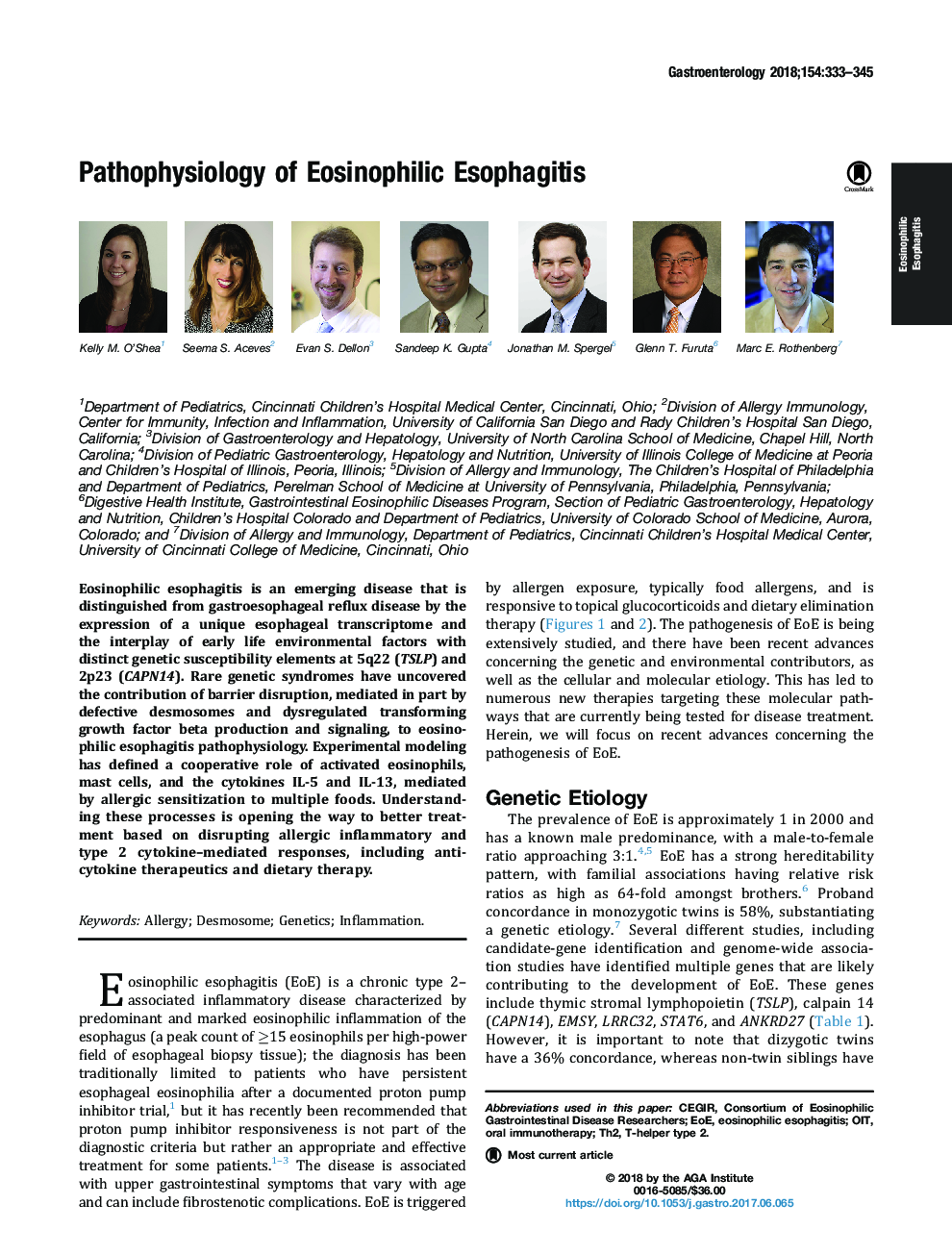| Article ID | Journal | Published Year | Pages | File Type |
|---|---|---|---|---|
| 8727003 | Gastroenterology | 2018 | 13 Pages |
Abstract
Eosinophilic esophagitis is an emerging disease that is distinguished from gastroesophageal reflux disease by the expression of a unique esophageal transcriptome and the interplay of early life environmental factors with distinct genetic susceptibility elements at 5q22 (TSLP) and 2p23 (CAPN14). Rare genetic syndromes have uncovered the contribution of barrier disruption, mediated in part by defective desmosomes and dysregulated transforming growth factor beta production and signaling, to eosinophilic esophagitis pathophysiology. Experimental modeling has defined a cooperative role of activated eosinophils, mast cells, and the cytokines IL-5 and IL-13, mediated by allergic sensitization to multiple foods. Understanding these processes is opening the way to better treatment based on disrupting allergic inflammatory and type 2 cytokine-mediated responses, including anti-cytokine therapeutics and dietary therapy.
Keywords
Related Topics
Health Sciences
Medicine and Dentistry
Gastroenterology
Authors
Kelly M. O'Shea, Seema S. Aceves, Evan S. Dellon, Sandeep K. Gupta, Jonathan M. Spergel, Glenn T. Furuta, Marc E. Rothenberg,
